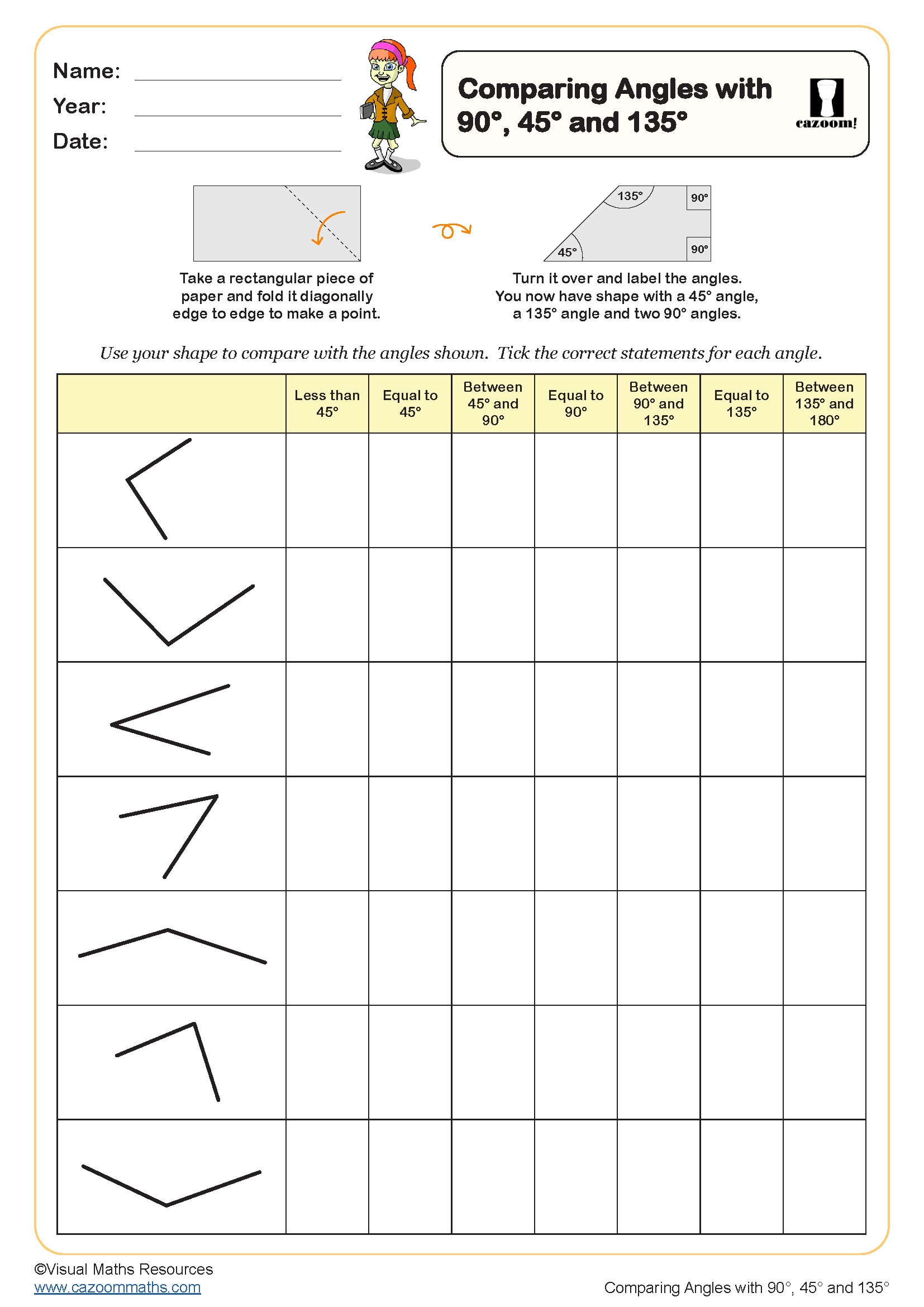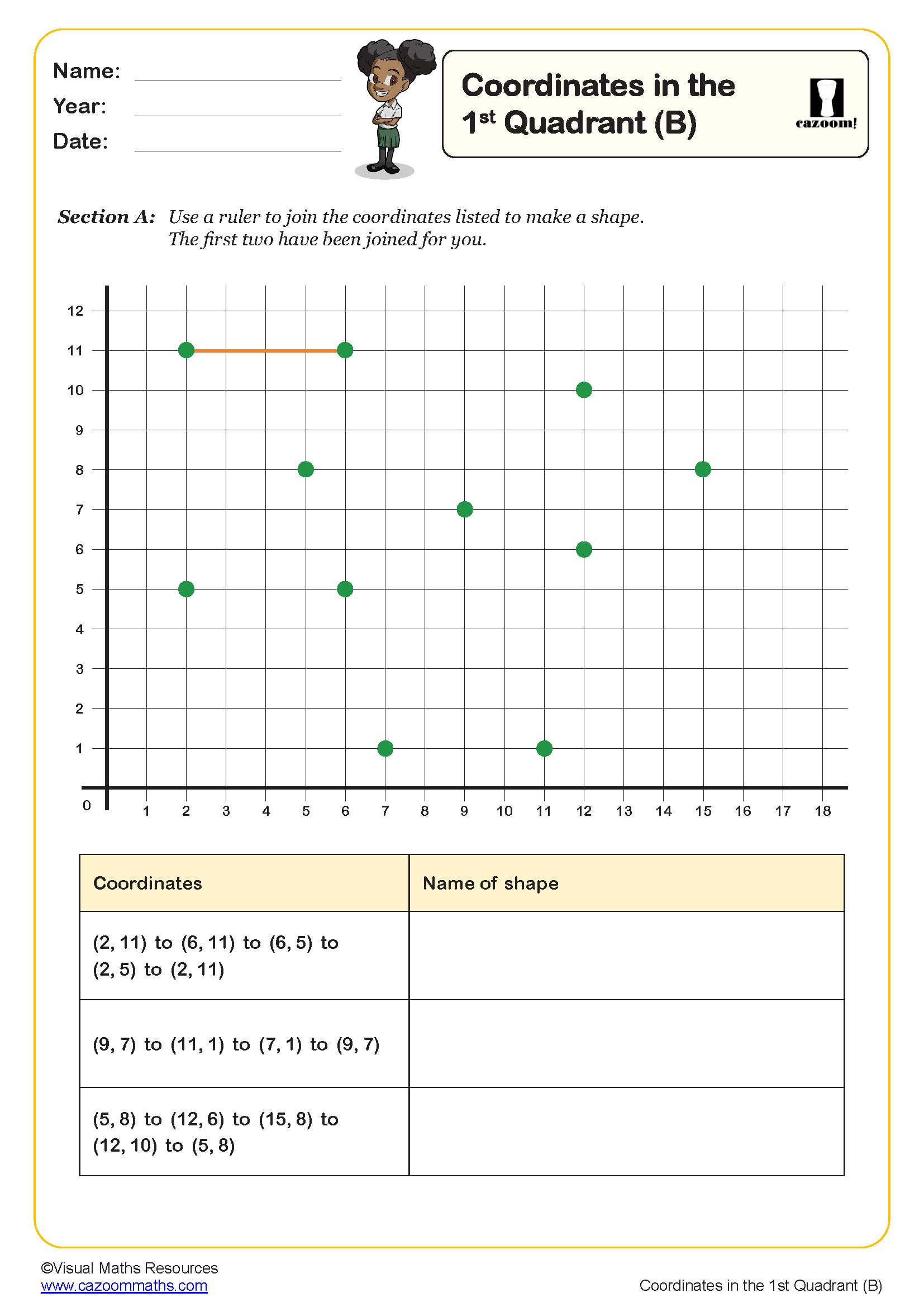Year 4 Geometry Worksheets
Year 4 Geometry Worksheets PDF Collection with Detailed Solutions
Our ready-to-use, printable PDF geometry resource collection covers everything from polygons, coordinates, to early angle work and coordinate basics. Each of these Cazoom Maths worksheets comes with step-by-step solutions that show the mathematical thinking process, making them ideal for independent practice, assessment preparation, or homework tasks that parents can actually support.
Core Geometric Concepts Developed in These Year 4 Resources
Your young pupils will begin by consolidating shape recognition before moving into more sophisticated property work and early measurement concepts. The progression from identification tasks to problem-solving really helps develop that geometric reasoning. Here's what particularly engages Year 4 learners:
• Exploring 2D Shapes: Develops recognition of advanced polygons, including hexagons, octagons, and irregular shapes, focusing on properties such as sides and angles.
• Understanding 3D Shapes: Builds confidence in identifying and describing 3D objects by counting faces, edges, and vertices.
• Introduction to Angles: Introduces right, acute, and obtuse angles, helping students distinguish between angle types in shapes and diagrams.
• Working with Coordinates: Lays the foundation for position and movement through simple grid reference tasks and plotting on coordinate grids.
• Symmetry and Patterns: Encourages exploration of reflective and rotational symmetry in 2D figures, including identifying lines of symmetry.
• Perimeter Practice: Reinforces measurement skills through calculating the perimeter of various 2D shapes, connecting geometry with real-world problem-solving.
How Consistent Geometry Practice Transforms Year 4 Mathematical Thinking
The visual-spatial skills your primary school children build through shape work directly support their understanding of fractions, measurement, and even number patterns. This foundation becomes essential preparation for the more demanding geometry requirements in KS2 and KS3.
• Strengthens mathematical vocabulary and precise geometric language
• Develops spatial awareness crucial for advanced mathematical concepts
• Builds confidence with assessment-style geometry questions
• Enhances logical reasoning and pattern recognition abilities
• Creates solid foundations for measurement and data handling work
Real-World Connections That Make Year 4 Geometry Meaningful
We've found that when children recognise geometric concepts in architecture, nature, and technology around them, their mathematical curiosity absolutely flourishes. It's actually quite satisfying when they start analysing the geometric patterns in everything from football pitches to video game graphics!
• Architecture and construction - understanding building shapes, bridges, and structural design.
• Art and creativity - tessellations, Islamic patterns, and geometric artwork
• Sports and games - field layouts, strategy formations, and equipment design
• Technology and coding - pixel art, game design, and digital graphics
• Nature studies - crystal structures, flower patterns, and animal symmetries
• Design and engineering - product shapes, packaging, and mechanical components

